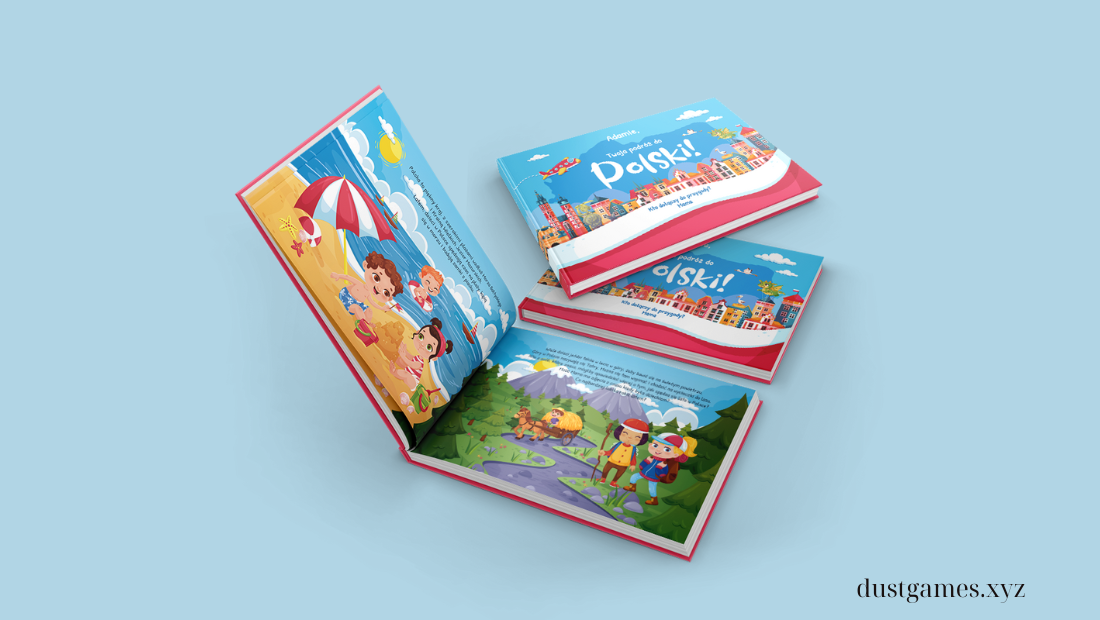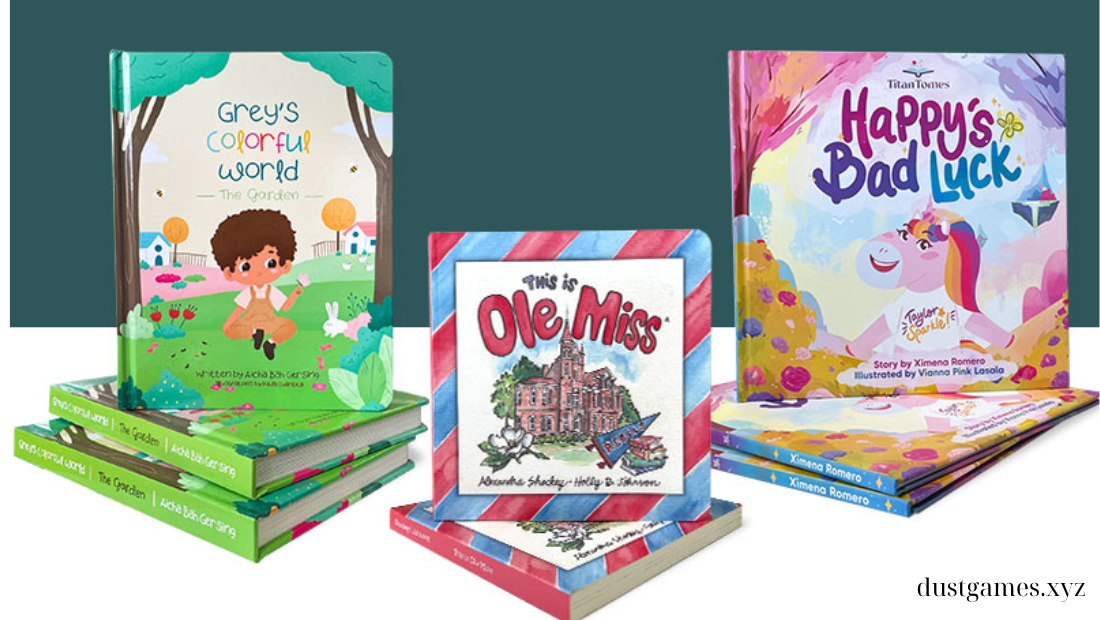Blog
Engaging Childrens Picture Books: Captivating Stories for Little Ones
Picture books hold a special place in the hearts of both children and adults. They serve as a gateway to imagination, education, and bonding experiences between parents and their little ones. With vibrant illustrations and captivating stories, children’s picture books are more than just reading material; they are tools that nurture creativity, language development, and emotional intelligence. In this article, we will explore the importance of engaging picture books, highlight some must-read titles, and offer tips for selecting the perfect books for your little ones.
The Importance of Picture Books
1. Language Development
One of the most significant benefits of reading picture books to children is their impact on language development. Engaging stories introduce new vocabulary and concepts, helping young readers expand their language skills. As children listen to the rhythm of the text and observe the illustrations, they begin to understand the connection between words and images, enhancing their comprehension.
2. Fostering Imagination and Creativity
Picture books often contain whimsical narratives and colorful illustrations that spark the imagination. They encourage children to envision different worlds, characters, and scenarios, fostering creativity. This imaginative play is crucial for cognitive development and problem-solving skills.
3. Emotional Intelligence
Many picture books address emotions and social situations, providing children with a framework for understanding their feelings and those of others. Stories that explore themes like friendship, kindness, and resilience help children develop empathy and emotional intelligence, essential skills for navigating social interactions.
4. Bonding Time
Reading together creates an intimate bonding experience between parents and children. The act of sharing a story allows for meaningful conversations, laughter, and discussions about the illustrations, fostering a love for reading and learning. This shared experience can strengthen relationships and create lasting memories.

Must-Read Engaging Children’s Picture Books
1. “Where the Wild Things Are” by Maurice Sendak
This classic picture book tells the story of Max, a young boy who sails away to an island inhabited by wild creatures. The imaginative narrative and enchanting illustrations captivate children, encouraging them to explore their feelings and understand the importance of home and family.
2. “The Very Hungry Caterpillar” by Eric Carle
A beloved staple in children’s literature, this book follows a caterpillar as it eats its way through various foods before transforming into a beautiful butterfly. The simple yet engaging text and vibrant illustrations teach counting, days of the week, and the concept of metamorphosis, making it both entertaining and educational.
3. “Goodnight Moon” by Margaret Wise Brown
A timeless bedtime classic, “Goodnight Moon” features a gentle rhythm and soothing illustrations that create a calming atmosphere for bedtime. The repetitive structure encourages predictability, helping children relax as they prepare for sleep.
4. “Don’t Let the Pigeon Drive the Bus!” by Mo Willems
This interactive picture book invites children to engage with the story by responding to the pigeon’s pleas to drive the bus. Willems’ humorous storytelling and charming illustrations capture children’s attention, making it a fun read-aloud experience that encourages participation and laughter.
5. “The Gruffalo” by Julia Donaldson
In this clever tale, a clever mouse outsmarts various predators by inventing a fearsome creature called the Gruffalo. The rhyming text and whimsical illustrations create an engaging story that teaches children about bravery and intelligence in the face of danger.
6. “Brown Bear, Brown Bear, What Do You See?” by Bill Martin Jr. and Eric Carle
This delightful book introduces children to colors and animals through repetitive and rhythmic text. The engaging illustrations by Eric Carle make this book visually appealing, and the predictable pattern encourages young readers to join in and participate.
7. “Chicka Chicka Boom Boom” by Bill Martin Jr. and John Archambault
This lively alphabet book features letters racing to the top of a coconut tree. With its rhythmic, sing-song text and bright illustrations, “Chicka Chicka Boom Boom” makes learning the alphabet fun and memorable, capturing children’s attention from the first page.
8. “The Snowy Day” by Ezra Jack Keats
This Caldecott Medal-winning book follows a young boy named Peter as he explores the wonders of a snowy day. Keats’ simple yet evocative text and beautiful illustrations capture the magic of winter, making it relatable and delightful for young readers.
9. “Pete the Cat: I Love My White Shoes” by Eric Litwin
In this catchy, musical tale, Pete the Cat goes on an adventure while wearing his white shoes, which change color as he steps in various messes. The story teaches resilience and positivity, encouraging children to embrace change and find joy in every situation.
10. “Last Stop on Market Street” by Matt de la Peña
This beautifully illustrated story follows a young boy named CJ and his grandmother as they travel through their city on a bus. The book highlights themes of community, kindness, and the beauty in everyday life, promoting empathy and gratitude in young readers.
Tips for Choosing Engaging Picture Books
When selecting picture books for preschoolers, consider the following tips:
1. Age Appropriateness
Choose books that match the developmental stage of your child. Look for age recommendations on the book cover or in the description. Younger children may prefer simple stories with vibrant illustrations, while older preschoolers may enjoy more complex narratives.
2. Diverse Themes and Characters
Expose your child to a variety of themes and characters. Books that celebrate diversity and different cultures can broaden a child’s understanding of the world and foster acceptance and empathy.
3. Interactive Elements
Look for books with interactive features, such as flaps to lift, textures to touch, or rhyming text that encourages participation. Interactive books can enhance engagement and make reading a dynamic experience.
4. Personal Interests
Consider your child’s interests when selecting books. Whether they love animals, outer space, or adventures, finding books that align with their passions can make reading more appealing.
5. Illustration Style
Engaging illustrations are crucial for capturing a child’s attention. Look for books with colorful, vivid illustrations that complement the story and stimulate imagination.
Conclusion
Engaging children’s picture books are vital tools for fostering a love of reading and learning in young children. Through captivating stories and beautiful illustrations, these books provide a foundation for language development, creativity, and emotional intelligence. By introducing your little ones to a diverse selection of picture books, you can create a rich reading environment that nurtures their curiosity and imagination. Whether it’s a classic tale or a contemporary gem, the right picture book can transport children to magical worlds, spark their creativity, and create lasting memories for both parents and children.

